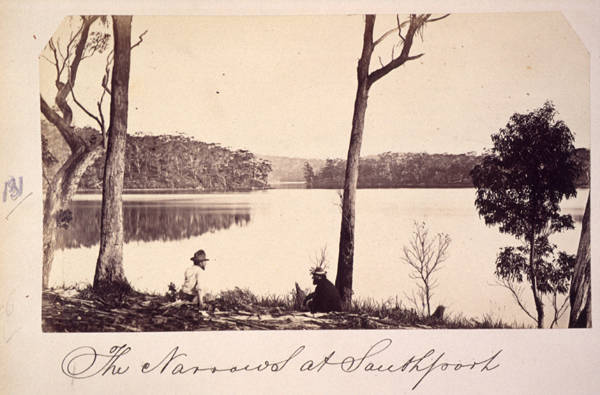 |
 |
|
Far South
The Far South was first inhabited by the Lyluequonny people, who were studied in detail by the French naturalists on the d'Entrecasteaux expedition in 1793. The French also mapped the area, studied the flora, held the first masses on Australian soil and planted gardens. Whalers, sealers and convict bolters were the first permanent white inhabitants, with Recherche Bay reputed to be a place of nefarious deeds. Whaling and timber were the main industries, with sixteen whaling stations at Recherche Bay, and others further north. The only early land grant was made at Hythe (later Southport) in 1822. Soon everywhere south of Dover was reserved for its blue gum value. A police station was established at Hythe, and in the 1840s probation stations at Dover and Hythe. In late 1820s Tasmania's earliest overseas timber export left Southport for Europe, but amounts were small until in the early 1850s timber leases were available and mill towns emerged at, for example, Lune River, Ramsgate (later Cockle Creek) and Leprena. Timber milling, boat building, fishing and small-scale farming were the main occupations, and Catamaran, site of a large colliery, was called 'poor man's Venice', because the only way to communicate was by boat. Cabbages grew at Recherche Bay, and at Southport an ex-convict named Dickenson wrote Australia's first local gardening manual. In the 1890s depression, unemployed people were resettled near Southport in a commune, eventually unsuccessful. After the First World War, cutting out of accessible forests, the impact of bushfires, a fall in demand for coal and better job chances elsewhere caused a mass exodus, and most places fell into a torpor. Many are ghost towns. The major remaining town, Southport, almost destroyed by the 1967 bushfires and the closure of the Ida Bay limestone mine, is gradually being repopulated by new residents seeking a 'sea change'. New tourism developments may revitalise surveyor Frankland's 170-year-old dream of the Far South beaches hosting 'boarding houses and bathing machines'. Further reading: P Kostoglou, Historic timber-getting between Cockle Creek and Lune River, Hobart, 1993; and … between Hastings and Dover, Hobart, 1994; N Plomley & J Piard-Bernier, The General, Launceston, 1993; B Poulson, The battlers from the bush, Dover, 1999; and Recherche Bay, Southport, 2004. Bruce Poulson
|
Copyright 2006, Centre for Tasmanian Historical Studies |
